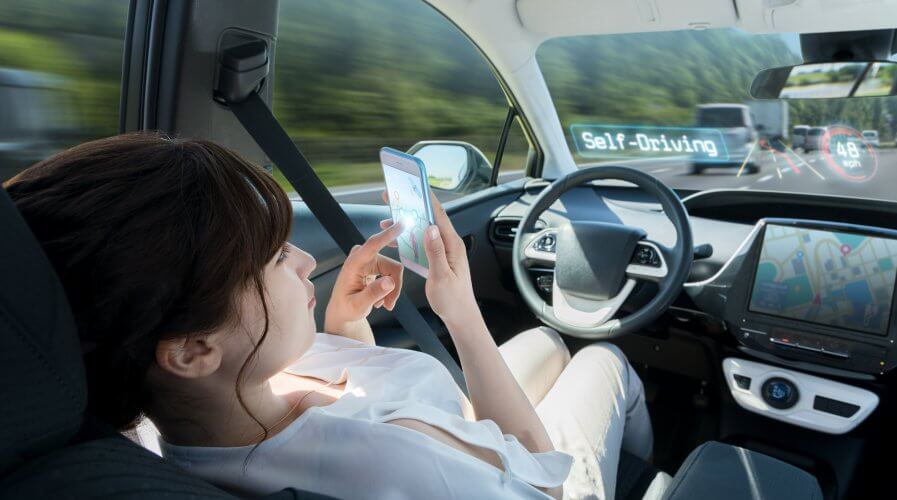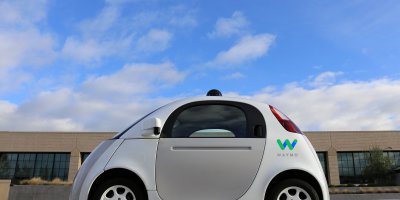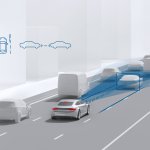
The cars of the future – why aren’t they here already? Source: Shutterstock
Four keys to developing the car of the future
IT IS amazing to think about how far transportation technology has come in just a short time.
Just 50 years ago, the Apollo Guidance Computer (AGC) aboard Apollo 11, the first spacecraft to land men on the moon, only had 16k of memory—less than most pocket calculators.
Today, autonomous vehicles are literally mobile supercomputers traveling down the road, capable of processing trillions of transactions per second.
These self-driving cars require highly-complex, data-driven systems such as steering, braking, and acceleration to communicate at breakneck speeds, playing off each other, adapting in real time to changing driving conditions while orchestrating a seamless and safe experience for passengers.
At the same time, thousands of vehicle sensors interact with other vehicles, traffic infrastructure, even the road itself—all in an effort to avoid hazards and map out the most optimal route.
Thinking back on the 16k computer that helped put men on the moon, it’s truly amazing how far we’ve come.
But we’re not there yet.
While autonomous vehicles are being field tested on roads around the world, we’re still at least a decade away from true ubiquity. And that’s the thing about autonomous driving.
It will only work if the majority of vehicles are autonomous capable. All it takes is for one manual driver to jerk the wheel, pump his brakes or idle in a designated loading zone to throw the whole system out of balance.
Adoption is going to have to be quick—virtually overnight—as large proportions of the driving public makes the switch to autonomous driving at the same time.
Making everything work together is going to require robust testing and reliable measurement as well as a lot of patience. Here are four keys to enabling the car of the future:
#1 | Connectivity
There are a lot of moving parts of a car, and they all have to work together. Connections are both wired and wireless, and latency is absolutely critical. Just a mere 0.3 second delay in reaction time can result in an extra 20 feet of braking distance while traveling 50 miles per hour.
That could easily be the difference between stopping safely and plowing through traffic.
The networks that run the car of the future will need to be stress-tested extensively to ensure reliability and performance, and they will need to be monitored constantly for any hiccups or bottlenecks.
A delayed email or missed shopping transaction can be annoying and cost money, but network errors in an autonomous car could mean the loss of life.
It’s really rare that network performance has a life or death impact, but that is our reality with autonomous vehicles.
#2 | Intelligence
The car of the future is also going to have to be smart.
Autonomous driving systems need to know the difference between a bicycle and a motorcycle or road sign and a pedestrian.
They’ll also have to account for sensor interference resulting from foggy, rainy and wintery conditions as well as line of sight issues.
Autonomous vehicles are also going to have to learn on the job with machine learning, adapting to their environment and other vehicles throughout their lifecycle.
#3 | Power
The car of the future is not going to rely on fossil fuels. Advanced battery technology will continue to be developed, providing clean, renewable and reliable power for autonomous vehicles.
Costs will drop—lithium ion batteries are expected to go below $100 per kWh in the next five years—and infrastructure to support battery technology such as charging and waste stations will proliferate.
New technology beyond lithium ion batteries are already being developed with lithium air and solid-state lithium ion batteries.
Again, testing is going to be key as they will need to be conducted in a safe, effective and efficient manner.
#4 | Cybersecurity
Perhaps most important of all, the car of the future is going to have to be secure.
Unfortunately, even the most hardened computer networks are susceptible to cyberattacks, and there’s no reason to think that malicious actors won’t try to take control over vehicles from afar.
Operators are going to have to continuously monitor autonomous systems for vulnerabilities.
Instead of barricading the perimeter—which has been proven to be nearly impossible—autonomous vehicle operators are going to need to scrutinize the network for unexpected, abnormal behavior.
For example, network traffic flowing to an anonymous remote server will be a sure sign that something is up.
READ : Self-driving security: How Detroit leads the way in automotive cybersecurity. via: @modeld
A hacker takes control of an autonomous car and forces it to do his or her bidding, flaunting the wishes of a car owner who… https://t.co/1rx8MVC3DM pic.twitter.com/uzFr95MBXD
— TU-Automotive (@TUAutomotive) March 25, 2018
We’ve come a long way since a computer less powerful than a pocket calculator helped put men on the moon.
The car of the future is going to be extremely complex and data-driven—relying on powerful and highly-reliable interconnectivity between disparate systems.
They are going to run on clean, renewable fuel and they will need to be secure.
Ensuring all this will be manufacturers and operators ability to conduct robust testing and continuous monitoring.
Simply put, the networks that run autonomous vehicles will need to be the most reliable and secure in history. The car of the future is counting on it.
Contributed by Keysight Technologies Senior Vice President Gooi Soon-Chai.
READ MORE
- Ethical AI: The renewed importance of safeguarding data and customer privacy in Generative AI applications
- How Japan balances AI-driven opportunities with cybersecurity needs
- Deploying SASE: Benchmarking your approach
- Insurance everywhere all at once: the digital transformation of the APAC insurance industry
- Google parent Alphabet eyes HubSpot: A potential acquisition shaping the future of CRM




